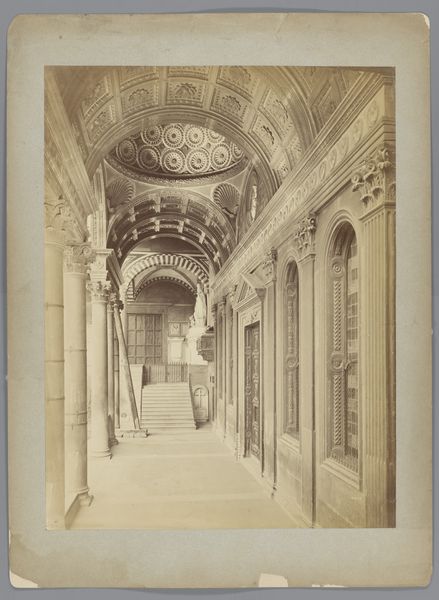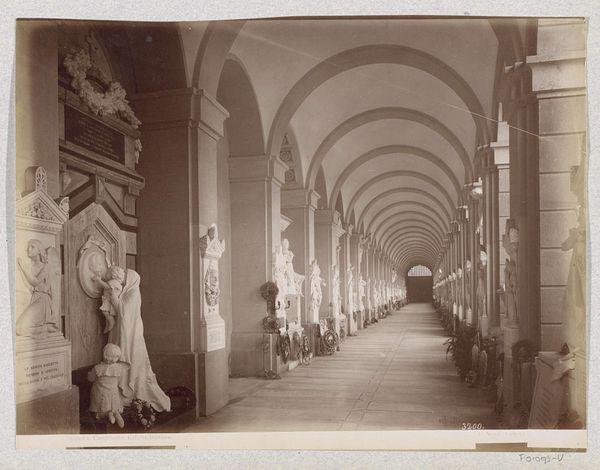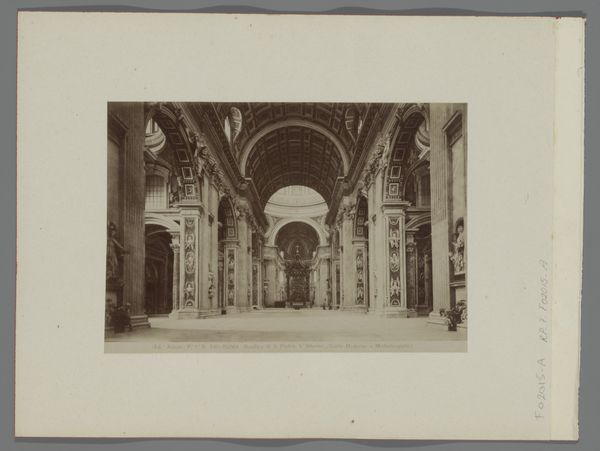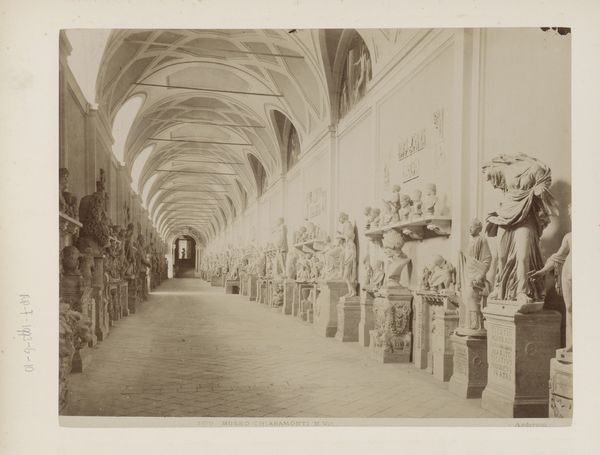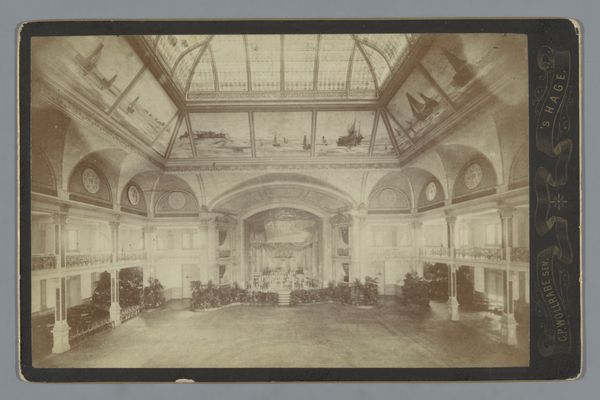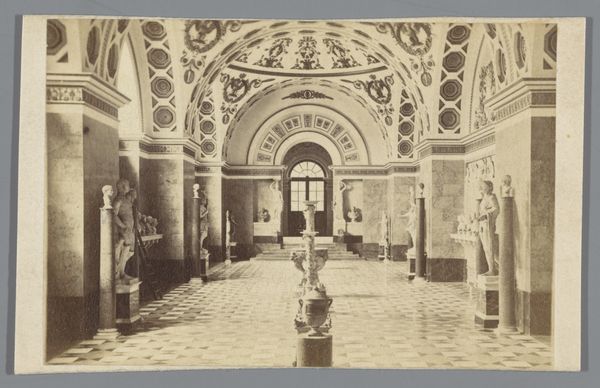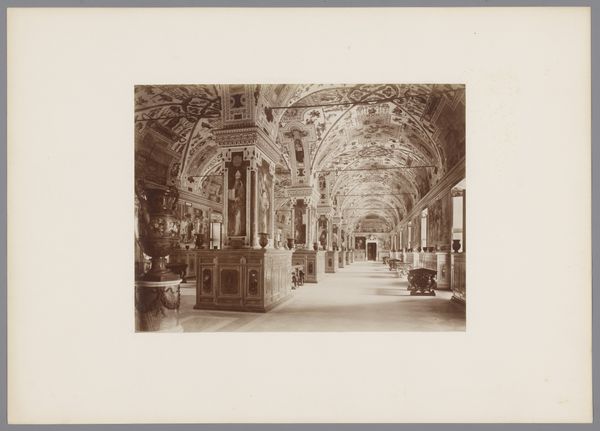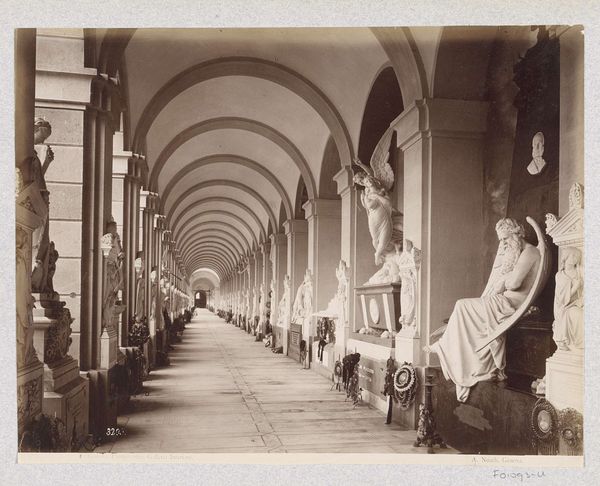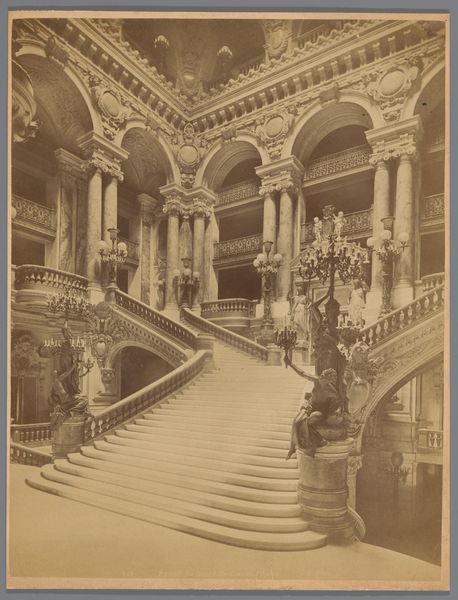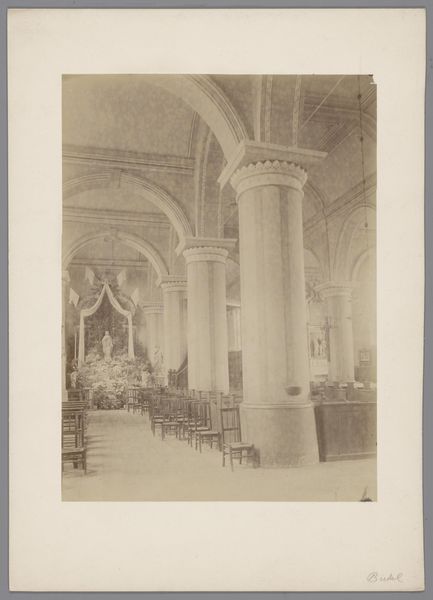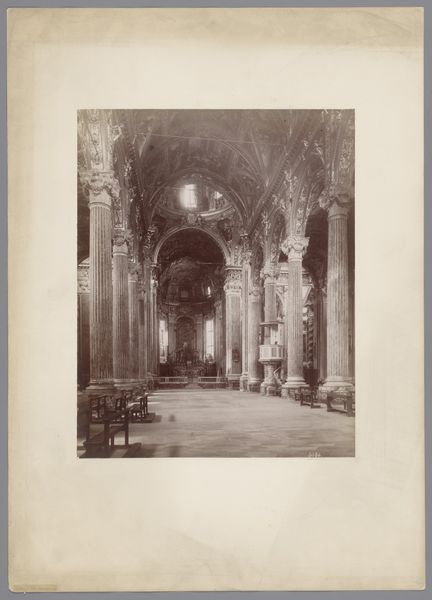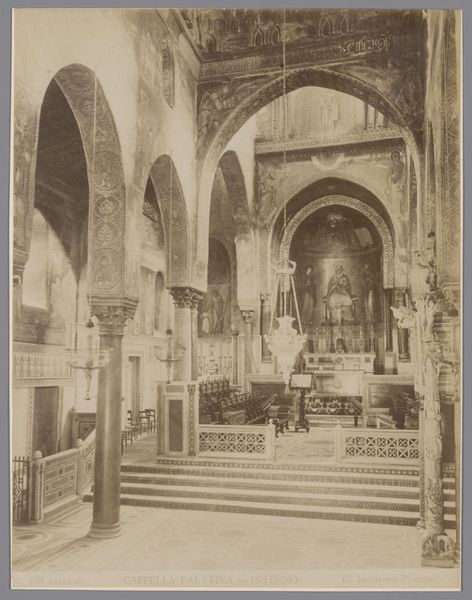
Braccio Nuovo (nieuwe vleugel), Museo Chiaramonti, Vaticaanstad c. 1857 - 1875
0:00
0:00
jamesanderson
Rijksmuseum
photography, gelatin-silver-print
#
neoclassicism
#
landscape
#
photography
#
ancient-mediterranean
#
gelatin-silver-print
#
academic-art
Dimensions: height 204 mm, width 259 mm
Copyright: Rijks Museum: Open Domain
Curator: This gelatin-silver print, taken sometime between 1857 and 1875, captures the Braccio Nuovo – that's "New Arm" – within the Vatican's Museo Chiaramonti. The photographer is James Anderson. Editor: Oh, my first thought? A beautiful, echoing silence. The long hallway receding into a distant glow—it’s visually hushed, almost holy. It feels like time stops there, with all those busts looking down. Curator: Exactly! Anderson has managed to freeze a very particular moment of the 19th-century museum experience. Think of this as a cultural record as much as a work of art. Consider how the Vatican sought to showcase and legitimize itself through displays of classical sculpture. Editor: The arrangement certainly communicates power. The statues feel… regimented, like an army of marble memories. I'm curious, does that precise arrangement impose a specific reading on these artworks that maybe isn't so faithful to how the people that created those images viewed them? Curator: That's a really astute observation! Indeed, Anderson's photograph is documenting a conscious arrangement, carefully designed to create a visual language of continuity between the papacy and the classical world. A sort of visual lineage is at play here. Editor: Right, because history is *always* shaped by whoever's telling it! It’s interesting to think about how Anderson's photograph participates in creating *another* layer of that shaping… all that neoclassicism upon ancient aesthetics creates a staged grandeur that just wouldn't exist if those sculptures were observed in another context. Curator: Precisely. By controlling the presentation of ancient artifacts, institutions could curate not just the art, but also their own public image. The photograph becomes a document of cultural authority and a piece of academic art in itself. Editor: I wonder about that lone figure we see receding in the distance: they emphasize the almost exaggerated perspective in the space, adding scale, and almost a ghostly reminder of time passing. I bet this hall has echoed with centuries of footfalls. Curator: It has indeed! In conclusion, James Anderson has masterfully preserved a visual snapshot of a powerful institution constructing a particular historical narrative through art. Editor: Which begs the question... what new stories will be constructed as more eyes and hearts, mine included, wander its halls armed with perspectives from beyond those stony facades.
Comments
No comments
Be the first to comment and join the conversation on the ultimate creative platform.

